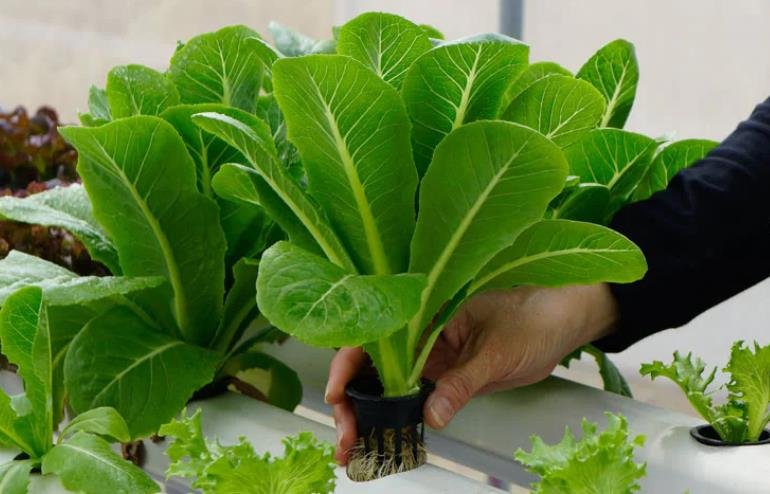Hydroponic Farming
Hydroponic Spinach Farming: A Budget-Friendly and Profitable Agriculture

Overview of the Blog
( Modern agriculture is being revolutionized by hydroponic farming, which provides a highly productive, efficient, and sustainable way to raise food. Because of its rapid growth cycle, high demand, and nutritional content, spinach stands out among the various crops cultivated hydroponically. Hydroponic spinach farming can be the ideal answer if you’re searching for agricultural alternatives that are both lucrative and affordable. }
What is Hydroponic Spinach Farming?
Spinach is cultivated in nutrient-rich water solutions using a soilless technique called hydroponics. Rather of depending on soil, the roots of the plants are either hung in water or held up by inert materials such as perlite, rock wool, or coconut coir. This approach guarantees a regulated supply of nutrients, quicker development, and greater yields than conventional soil farming.

Why Choose Hydroponic Spinach Farming?
- Increased Yield in Less Space: Because hydroponics enables vertical gardening, more spinach may be produced in a less space.
- Water Efficiency: Up to 90% less water is used than in conventional agriculture.
- Faster Growth: Because spinach directly absorbs nutrients, it grows 30–50% quicker.
- Reduced Chemicals and Pesticides: Because hydroponics is practiced in a regulated setting, the need for pesticides and chemicals is reduced.
- Year-Round Cultivation: Regardless of the weather, year-round cultivation ensures consistent output.

How to Start Hydroponic Spinach Farming?
1. Selecting the Right Hydroponic System
The best hydroponic systems for growing spinach are among the following:
In order to maintain continuous root contact, the Nutrient Film Technique (NFT) uses thin streams of nutrient-rich water that pass through channels.
In deep water culture (DWC), oxygenated nutritional water is poured over the roots of plants.
Ebb and Flow, or flood and drain, is the process of periodically flooding and draining a nutrient solution to provide food for the plants.
2. Choosing the Right Variety
The following are some excellent hydroponic spinach varieties:
The Bloomsdale Spinach
Hybrid Space Spinach
Massive Noble Spinach
Cardinal spinach in red
3. Setting Up the Hydroponic System
Grow trays or channels are required for Ebb and Flow or NFT systems.
The water reservoir is where the nutrition solution is kept.
Nutrient Solution: A well-balanced combination of micronutrients like calcium and magnesium, as well as nitrogen (N), phosphorus (P), and potassium (K).
pH Monitoring System: 5.5 to 6.5 is the ideal pH range for spinach.
LED grow lights, if used inside, provide steady exposure to light.
4. Maintaining and Harvesting the Crop
Check the pH and nutrient levels of the water every day.
Maintain enough ventilation to avoid the growth of mold and mildew.
Harvest spinach in 6–8 weeks for full leaves, or 4-6 weeks for baby spinach.
Frequently Asked Questions
1. Is hydroponic spinach farming profitable?
Yes! With faster growth, higher yields, and lower water usage, hydroponic spinach farming offers a profitable agriculture model. A small-scale setup can generate high returns, and commercial farms can scale up for significant profits.
2. What is the initial investment required to begin hydroponic spinach farming?
A commercial farm may need to spend $5,000 to $50,000, depending on size and automation levels, while a small-scale do-it-yourself hydroponic system may cost as little as $200 to $500.
3. Can I grow spinach at home using hydroponics?
Sure! You may begin by installing a modest NFT or DWC system in your garden, rooftop, or balcony.
4. How much time does it take for spinach to grow hydroponically?
While adult spinach takes around 6 to 8 weeks to harvest, baby spinach may be picked in as little as 4 to 6 weeks.
5. Does the flavor of hydroponically produced spinach vary from that of soil-grown spinach?
No, since hydroponic spinach is cultivated in a regulated environment with optimal nutrients, it sometimes even has a superior nutritional profile, taste, and texture than conventional spinach.
Conclusion
The production of spinach hydroponically is a prime illustration of both economical and successful gardening. A wise investment for anybody searching for sustainable agricultural prospects, whether they an urban gardener, commercial farmer, or business owner, is hydroponic spinach cultivation. Begin modestly, grow gradually, and reap the rewards of environmentally responsible, high-yield farming!












